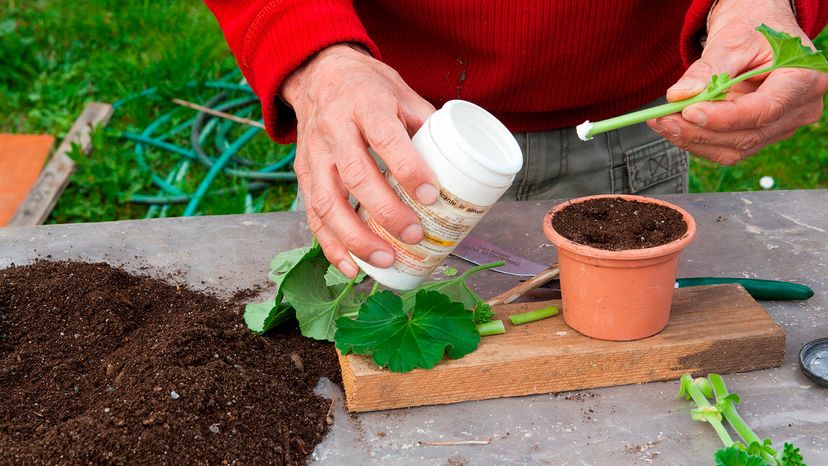The world of cacti is as diverse as it is enthralling, filled with a myriad of shapes, colors, and textures that captivate enthusiasts and gardeners alike. One of the challenges in propagating these resilient succulents is ensuring their successful root establishment. Enter rooting hormone—a potent catalyst in the process of cactus propagation. This guide will demystify the elegant art of using rooting hormone, illuminating the benefits, methods, and best practices that can significantly enhance your propagation ventures.
When considering cactus propagation, the utilization of rooting hormone offers a paramount advantage. With its ability to stimulate root development, this natural or synthetic aid serves as a vital component in increasing the success rate of plant cuttings, particularly for species known for their leisurely growth patterns. Understanding how to harness the power of rooting hormone can transform an amateur gardener into a formidable cactus curator.
The Science of Rooting Hormone: Understanding the Mechanisms
Rooting hormones, often derived from natural plant auxins, work by mimicking the growth-promoting hormones found in plants. These auxins play a crucial role in cellular elongation and division, prompting the formation of new roots when applied to cuttings. The most common forms of rooting hormone include powders, gels, and liquids, each with unique attributes that cater to specific propagation techniques.
When a cactus cutting is taken, it intricately involves processes that can prove detrimental if handled improperly. The plant must initiate cellular differentiation—transitioning from a dormant state to an active one that encourages root formation. Applying rooting hormone at this juncture catalyzes this transition, increasing the likelihood of survival for the cutting and subsequently developing a robust root system.
Types of Rooting Hormone: Choosing the Right Fit for Your Cactus
Not all rooting hormones are created equal, and the choice of product can impact your propagation success significantly. Here’s a closer examination of the predominant types:
Powdered Rooting Hormones: This classic form is popular due to its simplicity and ease of use. Simply dip the cut end of the cactus cutting into the powder and tap off the excess. The fine granules adhere to the cutting, forming a protective barrier and an enriched environment that promotes root growth.
Liquid Rooting Hormones: These solutions are often more concentrated and can be diluted with water before application. Soaking the cutting in a liquid rooting hormone for a short period allows for exceptional absorption, spreading the hormone throughout the cutting’s surface. This type is excellent for larger cuttings or species that require a bit more encouragement.
Gel Formulas: Offering a unique texture, gel rooting hormones provide a sticky consistency that keeps the hormone in contact with the cutting longer. This can optimize the rooting process and minimize wastage. Gel formulas are particularly useful in vertical applications, where the manipulative ease of the gel allows for precision.
Step-by-Step Guide: Using Rooting Hormone for Cactus Cuttings
Once the fundamental aspect of rooting hormones is understood, the actual implementation becomes a straightforward yet meticulous process. Following these methodical steps will ensure favorable results:
Selecting the Right Cactus: Choosing the right species is paramount. Varieties like Echinopsis, Opuntia, and Mammillaria are well-known for their ease of propagation and responsiveness to rooting hormones.
Taking the Cutting: Use a clean, sharp knife or scissors to take a healthy cutting. The ideal cutting length is typically around 4 to 6 inches. Allow the cutting to callus for 24 to 48 hours. This step is critical; it helps to heal any wound and reduces the risk of rot.
Applying Rooting Hormone: After the callusing phase, dip the cut end of the cactus into your chosen rooting hormone. Ensure you coat the wound thoroughly, allowing the hormone to adhere to the surface. For liquid formulations, soaking for a recommended time allows for deep penetration.
Planting the Cutting: Prepare a well-draining medium, typically a mix of cactus soil and perlite. Position the cutting upright in the pot, ensuring the hormone-coated end is nestled within the soil. This will create an ideal environment for the new roots to develop.
Providing Optimal Conditions: Place the pot in a location that receives indirect sunlight. The environment should be warm, with temperatures ideally between 70°F and 85°F. Avoid overwatering; damp soil is sufficient while the roots establish themselves.
Monitoring Progress: Within a few weeks, watch for signs of growth. Healthy cuttings will begin to sprout new growth or show signs of resilience, indicating successful root formation.
Utilizing rooting hormone in cactus propagation not only expedites the growth process but also imbues an element of intrigue and expectation as new life emerges. With a touch of patience and careful attention, even the most novice gardener can successfully propagate their favorite cacti varieties, enhancing both their collection and their appreciation for these magnificent desert botanicals.





Leave a Comment